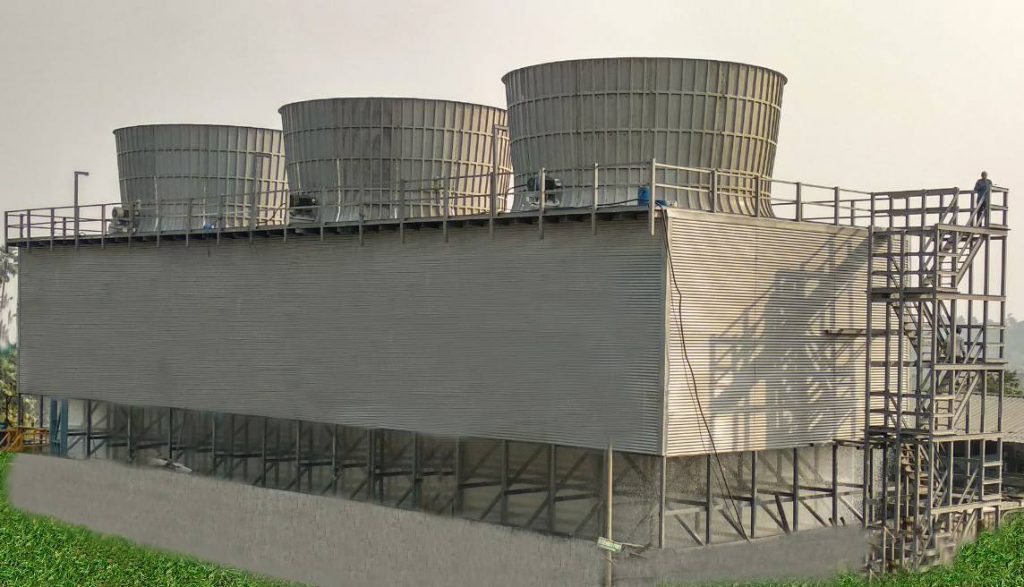Use of Pultruded FRP Channels in Cooling Towers
Pultruded Fiber-Reinforced Polymer (FRP) channels are increasingly used in cooling tower structures due to their corrosion resistance, high strength-to-weight ratio, and long-term durability. These profiles replace traditional materials like steel, aluminum, or wood, offering significant advantages in harsh cooling tower environments.
1. Why Pultruded FRP Channels in Cooling Towers?
Cooling towers face constant exposure to water, chemicals, humidity, and temperature fluctuations, leading to:
- Steel corrosion (rust, scaling, reduced lifespan)
- Wood rot & fungal growth (biological degradation)
- Aluminum pitting & galvanic corrosion
Pultruded FRP channels solve these issues with:
◉ Zero corrosion (no rust, even in saltwater or chemical-laden air)
◉ Lightweight (easier installation, less structural load)
◉ Non-conductive (safer in electrical environments)
◉ Low maintenance (no painting, sealing, or replacement needed)
◉ Long lifespan (20-50+ years, depending on conditions)
2. Common Applications of Pultruded FRP Channels in Cooling Towers
A. Structural Framework & Supports
- Replacement for steel beams & columns
- Support for fill media, drift eliminators, and fan decks
- Walkways, ladders, and access platforms
B. Louvers & Air Intake Structures
- Corrosion-resistant alternative to PVC or metal louvers
- Improved airflow efficiency with smooth FRP surfaces
C. Fan Cylinders & Casing Supports
- Non-conductive, vibration-resistant fan housings
- Resistant to moisture-induced warping
D. Water Distribution System Supports
- Pipes, nozzles, and pan supports (no rust or scaling)
3. Design & Material Considerations
Fiber & Resin Selection
| Component | Recommended Material |
| Fibers | E-glass (standard), S-glass (higher strength), Carbon fiber (premium) |
| Resin | Vinyl ester (best for chemical resistance), Isophthalic polyester (cost-effective) |
Standard Channel Profiles Used
- C-Channels (for framing, bracing)
- I-Beams (for heavy load-bearing structures)
- Hat Channels (for louver supports)
- Custom profiles (for specialized cooling tower designs)
Mechanical Properties (Typical E-Glass/Vinyl Ester FRP Channel)
| Property | Value | Comparison to Steel |
| Tensile Strength | 30,000–50,000 psi | ~50-70% of steel |
| Weight | 1.7–2.0 g/cm³ | 1/4 the weight of steel |
| Thermal Expansion | 6–10 × 10⁻⁶/°C | Similar to steel |
| Corrosion Resistance | Excellent | No rust, unlike steel |
4. Installation & Joining Methods
Since FRP cannot be welded like steel, proper joining techniques are crucial:
- Mechanical Fastening (stainless steel bolts with FRP-compatible washers)
- Adhesive Bonding (epoxy-based structural adhesives)
- Hybrid Connections (combining bolts & adhesives for critical joints)
Best Practices:
- Avoid over-tightening bolts (can crack FRP)
- Use UV-resistant coatings if exposed to sunlight
- Ensure proper alignment to prevent stress concentrations
